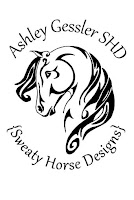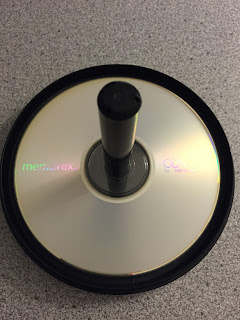I have had a few people stop me and say they tried editing their photos, but are generally disappointed with the results. Let me just say, I hear you loud and clear! Back before I started taking classes on photography and attending workshops on photo editing, I found myself getting more and more frustrated with my own editing results. Every once in a while I would get lucky and have a picture turn out really amazing with the edits I applied, but I never could pin point why one picture would turn out great while the next (with the very same edits) would turn out
blah-zey.
In most cases your editing outcome has nothing to do with your image... it has everything to do with what that preset edit is designed to seek out and change. If your image doesn't have what that edit is looking for, then it can't edit it correctly. Make sense?
To edit a great picture, you first have to START with a decent picture. All the basics have to be there: your subject needs to be shot at the appropriate level (
Read: Improving Your Pictures With This One Tiny Adjustment), your background needs to be clean (
Read: What's Up With Other Peoples' Photos?), and your subject needs to be sharp and in focus (
Read: Have You Heard of a Shooting Mode?). Regardless of how much editing you do a photo of the top of someone's head will still be a photo of the top of someone's head when you're finished, so you need to be sure you're starting with a quality image first.
It may be a 90 degree October day here in Alabama, but I'm dreaming of cooler weather, so I'm going to use mostly snow pictures for the sake of this blog. The first was taken while the snow was freshly falling, and the second was taken the next morning of the same bush.
All of these images are completely raw and untouched. They are decent enough, but let's add some editing touches and see what happens to them.
I'm using a preset I created in Lightroom specifically for my snow photos. I call it Sweet Snow Sharper. When using an editing software such as PicMonkey or Snapseed you won't have access to seeing what exactly the effect is designed to do, but after applying it to your images a few times you can probably figure out what exactly it's changing. Is it darkening your shadows? Is it lightening your image? Is it applying a color change? Is it softening the picture? Etc. Etc. Etc.
Sweet Snow Sharper editing presets
Sweet Snow Sharper is designed to brighten up the typical overcast skies that can be found on a snowy day and bring out the true white by canceling the bluish haze. In the right conditions it produces a beautiful image such as the one below. On the left is the original photo, and on the right is the same image with the Sweet Snow Sharper edit applied. Pretty and white!
Left: Before. Right: Perfectly white snow with Sweet Snow Sharper
Now, this second image was taken the next morning. The skies had cleared and the sun was brilliantly shining. The 'Before' picture was pretty clean on its own, and once I applied the Sweet Snow Sharper edit it fuzzed out my whites and had a truly detrimental effect on the overall image. The whole thing is glaringly bright.
Bleck! Same editing tool, but this one turned out too bright!
So, what happened? My base images were vastly different. They were shot in completely different lighting conditions, therefore the edit produces completely different results. This edit brings a brightness that the second image did not need, so the edit unnecessarily brightens the whole picture.
Let's look at another example. This edit is with my preset Lava Rock which is designed to bring out the contrast between the light and dark areas of the image. It works well on a well-lit subject to intensify the details. Just look at how it makes the flower in the lower image seem to pop!
Left: Before. Right: After applying the Lava Rock edit
When the same Lava Rock edit is applied to our snow photo, it darkens the bush and makes the whole picture feel drab and dreary. It's a far cry from the edit with Sweet Snow Sharper!
Left: Before. Right: After applying the Lava Rock edit. In this situation it looks terrible!
If you're using an edit supplied in one of the editing tools we mentioned in an earlier post (
Read: My Preferred Programs For Editing) then you may or may not know exactly what the edit is designed to do. When I'm using a program such as PicMonkey, I like to apply a chosen effect, see what it does, and build from there. If the edit produced a yucky picture then I wipe it out and try something else.
Editing can be a tricky business, and no one is ever truly finished with learning about how to improve images. It's always a never-ending process of evolution, so don't give up! I went through years of yucky edits before I started figuring things out, so there is hope for everyone.






































